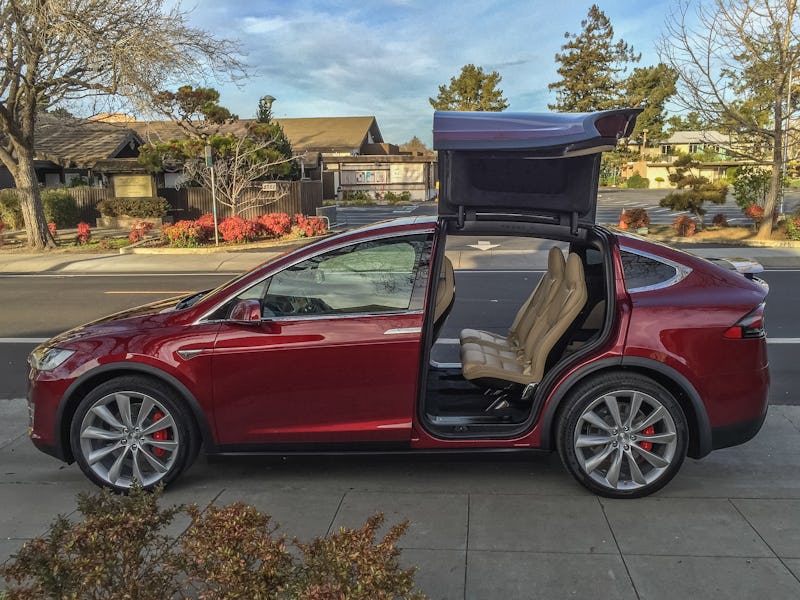How Long Could You Live Off the Grid With a Tesla Model X?
It wouldn't be cheap, but it's doable.

Living off the grid is any self-respecting recluse’s dream: No power bills or outages, no email, no Facebook event invitations, and no Uber pizza parties. It’d be great.
And increasingly efficient solar panels have made this dream closer to reality, but solar still has its limitations — storing energy is a big one. What happens if someone wants to move to a location deep in the Sierra Nevadas, where mountainous shade covers much of the land, and towering pines shade the rest? Could someone still live an off-the-grid lifestyle with some of life’s electrical comforts?
But thanks to the rise of increasingly powerful electric vehicles, charging, and battery technology, you could live off the grid for the most part — you’d just have to drive to a charging station every few days.
How long could an electric car power a house?
For the sake of this example, let’s look at the Tesla Model X.
The Model X screams "utility."
The average household energy consumption is around 30 kilowatt hours per day, according to the U.S. Energy Information Administration. Assuming the person living off the grid lives a modest lifestyle — as you might if you lived away from society — a fully charged Model X could provide three full days of electricity.
One note about battery storage: Depending on how energy is put into the battery during charging, University of California San Diego Engineering professor Raymond de Callafon tells Inverse that electric vehicle battery efficiency can be 95 percent or higher, so we’re working on the idea of a truly fully-charged battery.
What else would you need?
The car battery wouldn’t be able to be completely drained because the car has to be able to make it back to a recharge station. But Callafon notes a solution to this could be partial solar dependency.
“A typical solar system on your roof can provide 4 kW of power,” Callafon told Inverse. “If that produces eight solid hours of 4 kW of power, you would have 32 kWh of generated energy, which can cover your electric energy need for the day.”
Elon Musk companies naturally provide solutions to both of these problems as well. SolarCity could install the solar panels, and the Tesla Powerwall home battery could store the excess energy.
The off-the-grid house would also need a power inverter. Houses use alternating current (AC) power, while electric vehicles run off of direct current (DC). Callafon suggests a 10 kW inverter. In addition to transferring energy from the car, an inverter would also convert the DC voltage from the solar panels, but, Callafon warns, “inverters can be as expensive as batteries.”
Solving battery limitations
Even if all of the above works out, a person will have to return to civilization for a charging station at least twice a week. Not bad for someone living completely off the grid, but it causes a problem when it takes an entire night to fill up.
That’s where Callafon believes a new system should enter the equation: rechargeable battery swaps.
There aren’t any electric car companies that offer a service like this yet, but Callafon told KPBS that a swappable battery business could operate much like the propane fuel tank business works. Simply bring in the empty batteries and pay to switch them at a station for full ones.
Beijing already has the electric vehicle battery swaps off the grid living needs.
This system implies that electric vehicle batteries will be easy to remove and insert, so stacks on stacks on stacks of them could be kept at that reclusive Sierra Nevada home. Trips into town could theoretically be infinitely cut down.
“To be able to have the flexibility of moving energy around — you see it now from people who like to store their solar (energy) in a battery in their garage,” Callafon told KPBS. “And then (they) are able to move it into their car, or move those batteries in other utilities, a lawnmower, or any equipment you have.”
That’s one part of this equation that Musk and Tesla haven’t committed to. But with the rate of innovation in the electric vehicle industry, it’s only a matter of time.